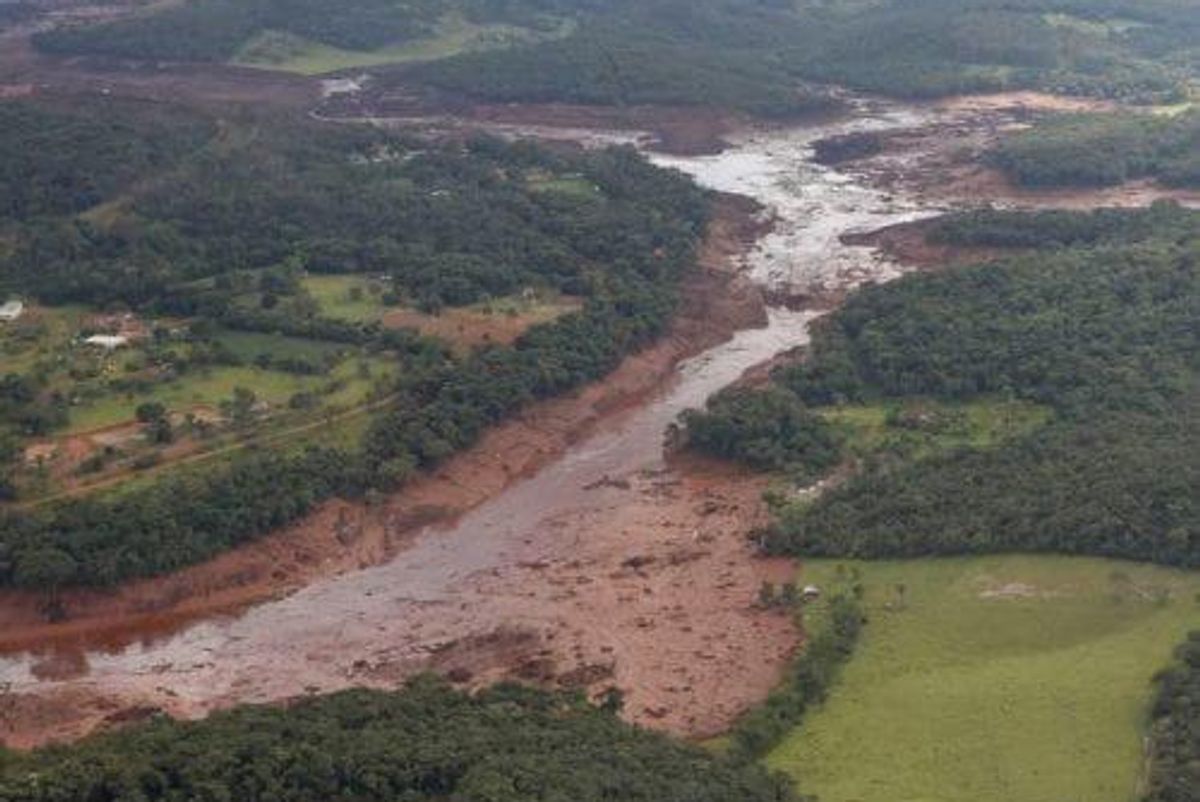
While the final death toll from the disaster is unknown, Vale’s CEO says that most of those affected were its own employees.
Disaster has struck again at a Vale (NYSE:VALE) facility, when on Friday (January 25), Dam 1 of the Córrego do Feijão mine near Brumadinho in south-eastern Brazil collapsed in what CEO Fabio Schvartsman called “a complete surprise.”
While the final death toll from the disaster is unknown, Schvartsman said that most of those affected were its own employees — of which 300 were working on site when the collapse occurred. Parts of Brumadinho were also evacuated in the aftermath as the region remained on high alert to further disaster.
As of Monday (January 28), the official death toll stands at 60 — though more than 300 are still missing as emergency services comb through the devastation.
In sobering news, the Associated Press reported that nobody was recovered alive on Sunday (January 27).
Newly minted President of Brazil Jair Bolsonaro said on Twitter that the government would be working to “meet the victims, minimize damage, ascertain the facts, seek justice and prevent new tragedies … for the good of Brazilians and the environment.”
Schvartsman said in a press conference that Córrego do Feijão was “a human tragedy” compared to the environmental destruction wrought by the Samarco tailings dam collapse in 2015 — a disaster for which Vale is still paying the price.
“We are talking about a large number of fatalities. We don’t know how many, but we know it will be large number and possibly environmental damage will be smaller,” he said.
The search for survivors and bodies will be a long one, as Schvartsman said that “everything was buried by the muddy sludge of the dam.”
The dam had a capacity of 12 million cubic metres of iron-ore mining byproduct, and had been undergoing decommissioning over the past three years.
Schvartsman could not elaborate on how much work was yet to be done to “fully turn off’ the facility before the collapse, but it had not received any new tailings in three years.
There were be plenty of questions — both within and without — about how Vale could have a second disaster on its hands in less than 5 years — Schvartsman said that Córrego do Feijão was a surprise because external audits given to the company reported that the dam was stable.
He said that the most recent audit was dated September 26, 2018 — only four months ago.
Under media questioning, Schvartsman said that since Samarco, Vale had been implementing a number of measures to avert a repeat of 2015 — including periodical external reviews of tailings facilities, emergency action plans, audits, modern warning systems and population registration within areas near facilities.
However, he said that the at Córrego do Feijão, “the breach was too violent, too fast” for any of the warning systems to have been effective.
In response to the disaster, Vale reported that it would be suspending executive bonuses and dividends while it focused on the recovery effort and its investigation into the collapse. Schvartsman has also announced plans to create a new dam safety standard.
On the New York Stock Exchange, as the news was reported on Friday, Vale’s share price dropped by over 11 percent to US$13.64, and on Monday morning after a weekend of updates on the scale of devastation, its shares fell again — this time by over 16 percent down to US$11.38.
In Sao Paulo, on the Brazilian stock exchange, the B3, Vale’s shares have so far dropped by more than 20 percent to 42.9 real.
Don’t forget to follow us @INN_Resource for real-time updates!
Securities Disclosure: I, Scott Tibballs, hold no direct investment interest in any company mentioned in this article.
